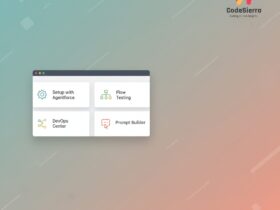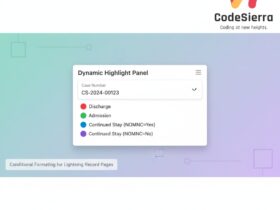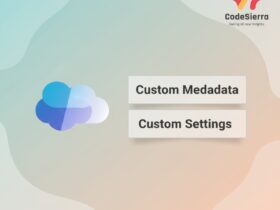External Objects let Salesforce access data stored outside your org in real time via Salesforce Connect — ideal when you can’t or don’t want to copy large datasets into Salesforce.
What are Salesforce External Objects?
External Objects are metadata in Salesforce that map to data stored outside your org. They behave like custom objects in the UI and metadata but the records remain in external systems. Use external objects to surface external data in Salesforce without duplicating it.
Key characteristics
- Data stays outside Salesforce; Salesforce stores only metadata.
- Objects are identified by the __x suffix (for example: accountInfo__x).
- Accessed on demand through Salesforce Connect, keeping data real-time and avoiding stale copies.
Relationship types for External Objects
Salesforce supports two special lookup relationship types for external objects:
- External Lookups — relate two external objects to each other.
- Indirect Lookups — relate a standard/custom Salesforce object to an external object using an external ID.
Limitations to keep in mind
- Maximum of 200 external objects per org.
- SOQL queries can include up to 4 joins across external objects.
- Aggregate functions such as MIN(), MAX(), SUM(), AVG(), and COUNT(field) are not supported (COUNT is supported).
- GROUP BY and HAVING clauses are not supported on external objects.
Why Salesforce Connect matters
Salesforce Connect is the integration layer that enables access to external data in real time without copying it into Salesforce. This reduces storage costs and ensures your users see up-to-date information from ERP systems, legacy databases, or third-party apps.
Typical use cases
- Integrating ERP systems for product, inventory, or billing data.
- Connecting legacy databases where data cannot be migrated.
- Displaying third-party application data (e.g., support tools, catalog services) inside Salesforce UI.
Best practices
- Design for read-on-demand: only surface fields/users that actually need external data.
- Use Indirect Lookups when you must connect Salesforce records to external IDs.
- Monitor performance: external system latency affects Salesforce experience.
- Consider caching patterns or middleware for frequently accessed datasets.
References
- External Objects — Salesforce Developer Docs
- External Objects in Salesforce Connect — Salesforce Help
Conclusion
External objects provide a lightweight, real-time integration model that is especially useful when dealing with large external datasets or systems where copying data is impractical. For Salesforce admins and developers, external objects and Salesforce Connect enable fast integrations with minimal storage overhead — but you should plan for limitations like query joins and unsupported aggregates.










Leave a Reply